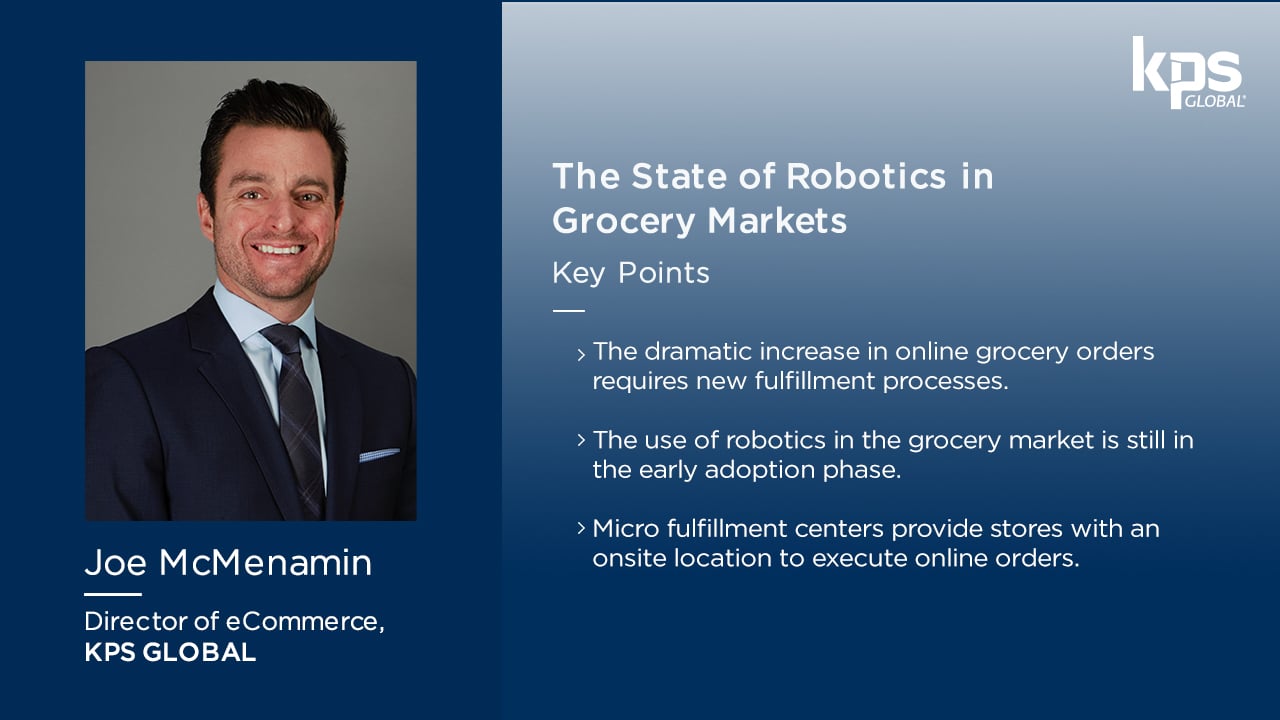To get a clearer picture of technology innovations and robotics solution in in the grocery delivery and fulfillment space, Cooler News tapped Joe McMenamin, Director of eCommerce at KPS Global, for some perspective.
A major reason why this conversation is relevant today is the pandemic’s disruption in the grocery industry and the increasing need for micro fulfillment centers, which have become an essential part of the grocery market equation. What does McMenamin think of the intersection between micro fulfillment centers with grocery brick and mortar stores in recent years?
“In 2019, only 3.4% of grocery sales were online,” McMenamin said. “That’s still almost $36 billion. Well, this year, it’s jumped to 10.2%, which is $106 billion. By 2025, we expect it to be 21.5% of the total market, which equates to about $250 billion. The key here is, with $250 billion, you can’t have folks walking up and down the aisles manually picking orders for online. You need to have an efficient system that’s optimized to fulfill orders quickly, and that’s where robotics is coming in.”
Because there is so much change in flux during this pandemic, many smaller grocery players are taking a wait-and-see, watch and learn approach to handling the demands of online grocery. They let the larger players experiment, figure out the best practices, and then look to adapt those processes once streamlined and affordable.
In terms of robotics, what are some of the options grocers can take advantage of today?
Some stores are choosing to create a dark store, which they can use as a mini-fulfillment center.
“Those are typically 25,000 to 80,000 square feet,” McMenamin said. “That’s the typical sizes of their grocery stores, and that’s a minimized cost option they could use. You also have micro fulfillment centers. What it does is, you may want to build into the side of the store, and you’re putting your robotics system in the market you have today, which minimizes the steps to fulfill online orders.”



